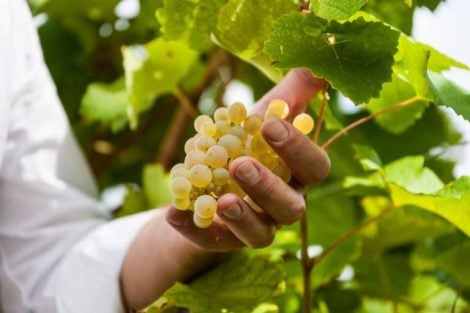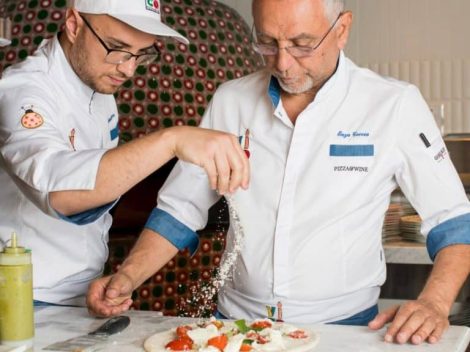Crushed ice and syrup: these - with the necessary local variations - are the main components for a good granita, in Italy and around the world. Influential to the recipe was Japan, with its tradition of kakigori, while in Italy it is Sicily that dominates the scene with the classic velvety granita with compact texture, without forgetting traditional Roman grattachecca. Here are 8 variations of granita for sunny day refreshment.
Granita in Italy and around the world
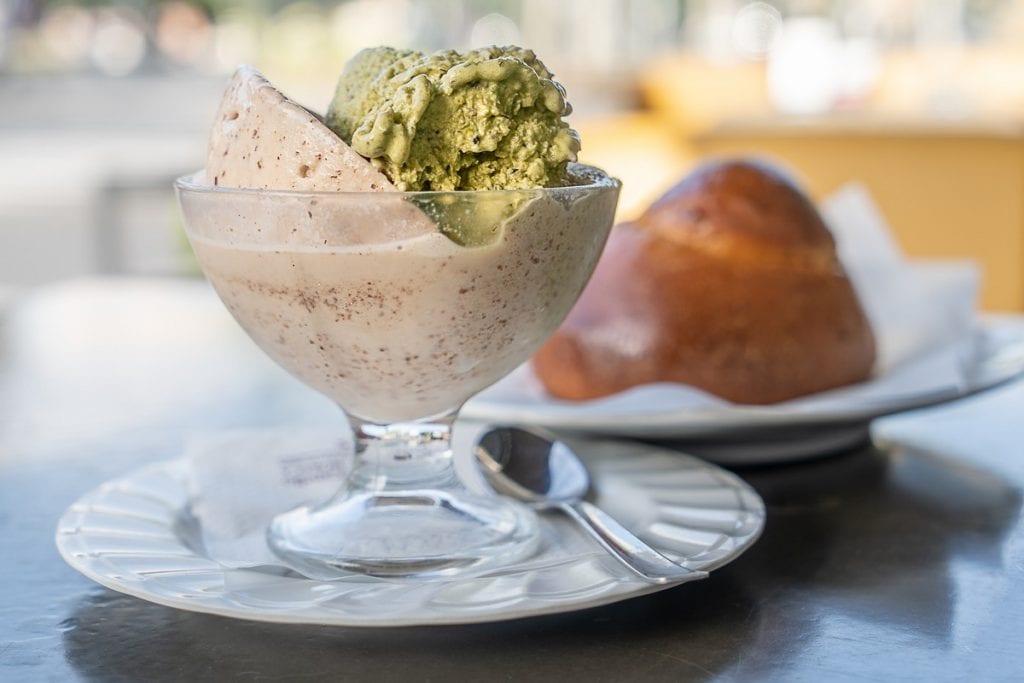
Sicilian granita
The first ancestor of this product is sherbet, a fruit juice flavoured with rose water and then frozen, a very popular drink at the time of the Islamic rule, which food historians identify as the original version of modern granita. Symbol par excellence of Catania and surrounding areas, Sicilian granita was in time made from the snow collected on Mt Etna by the "nivaroli" and stored in the stone "niviere" within the natural caves of the volcano. Once transformed into ice, the snow was scraped off and added with salt, before being placed in a steel container. By constantly mixing ice and honey, the Sicilians were able to obtain a pasty and soft consistency, perfect to be savoured by the spoonful, with freshly squeezed lemon or orange juice. In the 16th century the "pozzetto" was born, a zinc bucket placed inside a wooden vat, used for mixing granita, complete with shovels to prevent the formation of ice crystals. We had to wait until the 20th century, with the advent of new technology, for the pozzetto to be replaced by the gelato maker and snow substituted by water. But, returning to the present day, what are the variants of granitas in the world?
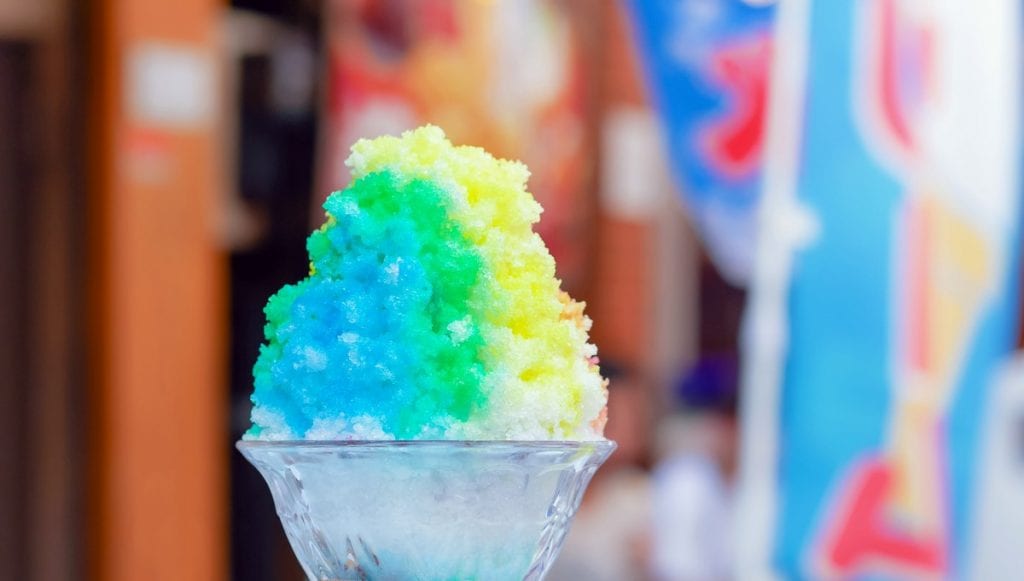
Shaved ice
A mixture of crushed ice coloured with syrup, piled into a paper cone like ice cream. Japanese immigrants, who arrived on the Hawaiian islands in the mid-19th century to work in the pineapple and sugar fields, spread the recipe for shaved ice, which immediately became one of the most famous local dishes. With these, the concept of kakigori also developed, a Japanese term for granita, invented to reuse the pieces of ice left over from the large blocks that were used to cool down work tools.
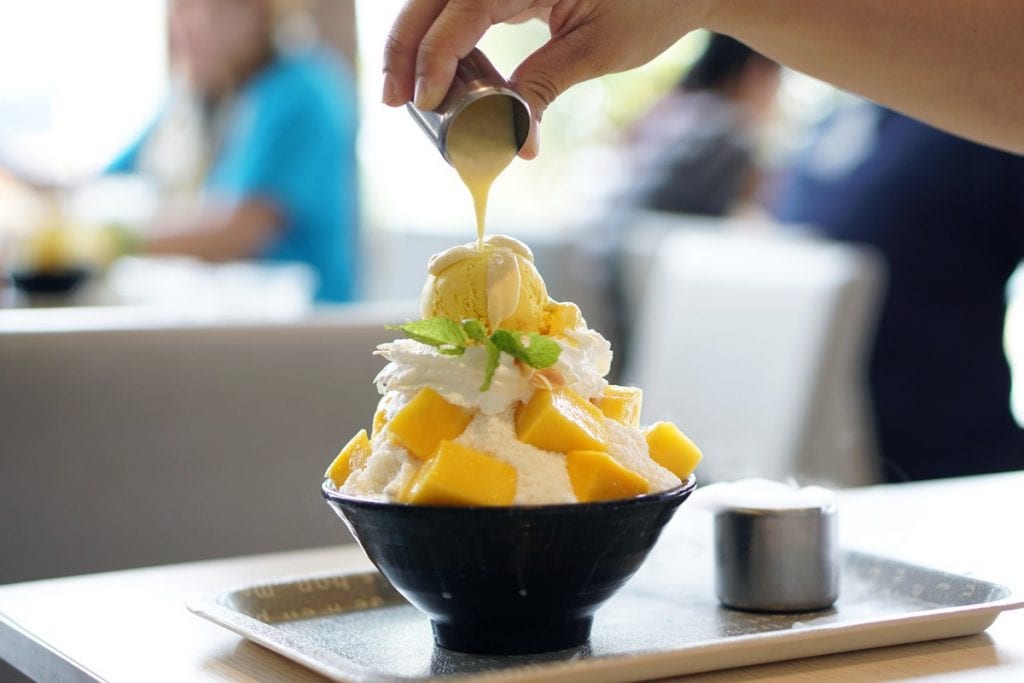
Kakigori
Let's move on to the original Japanese kakigori. When the temperature starts to rise in Japan, there is nothing better than this thirst-quenching drink to refresh from the heat. Colourful and with an inviting appearance, kakigori is prepared with finely crushed ice, so much so that it is almost soft, impalpable. These thin, transparent ice flakes are created with a special blade until they achieve a texture and appearance similar to that of snow. Finally, syrups are poured, from traditional fruit to more modern and original variations such as matcha tea.
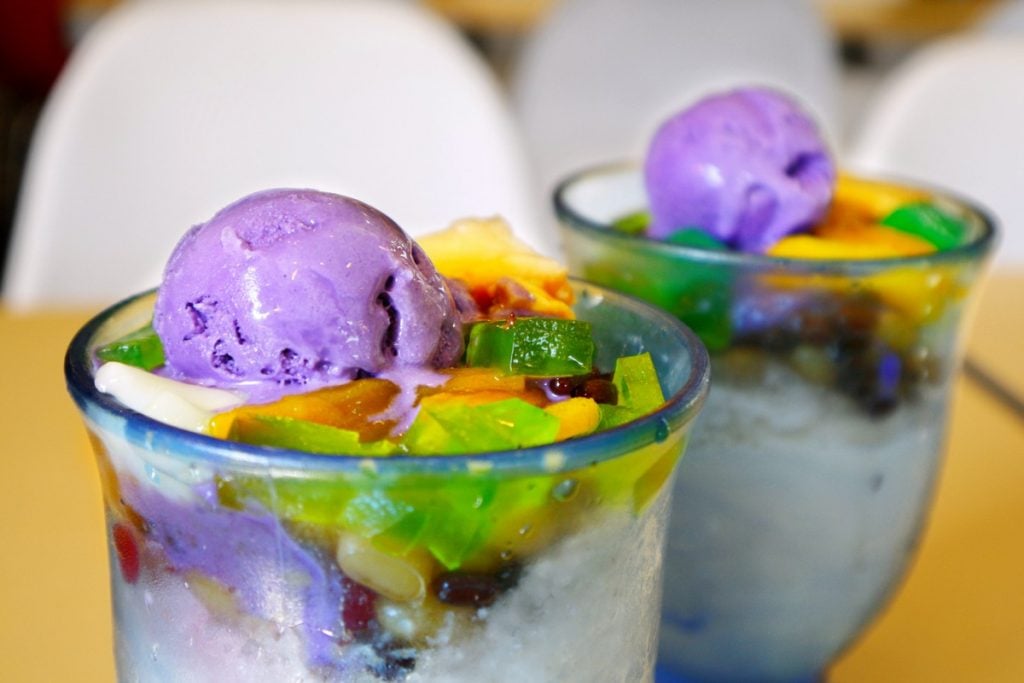
Halo halo
In the Philippines, halo halo is one of the most famous and popular desserts, comfort food loved by young and old and a precious ally against the scorching heat. Characteristic ingredient together with crushed ice is evaporated milk, that is unsweetened condensed milk, obtained from fresh milk stripped of about 60% of water. And then mung beans, coconut, sago - a starch extracted from a particular species of palm - fresh fruit and puffed rice, to which are sometimes added candied fruit, leche flan (milk flan) and gelatin: it is no coincidence that the name halo halo means "Mix, mix" precisely because of the large amount of ingredients provided. The birth of the recipe is once again due to the Japanese, who occupied the islands in the early 1940s and made the native people discover their specialties, including kakigori.
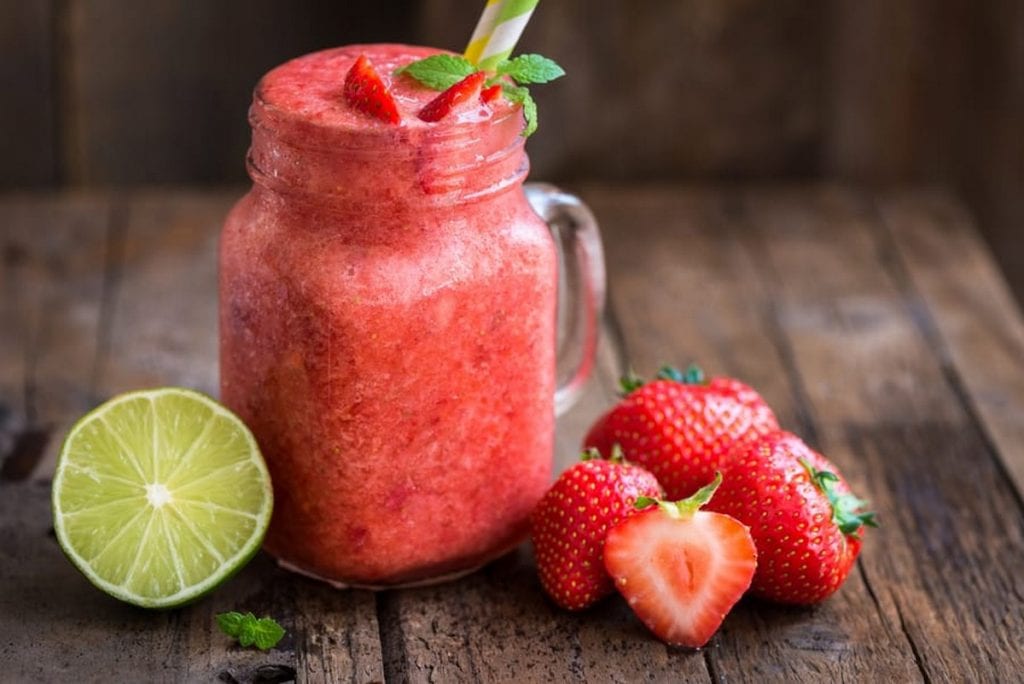
Cremolata
Similar to granita but with a greater quantity of fruit, cremolata (or gramolata) is a compound of water, sugar and about 80% fruit. The fruit is initially blended coarsely and then frozen, to be finally grated and reduced into small cubes and mixed. A fundamental characteristic of cremolata are the pieces of fruit that are clearly visible in the glass, of varying sizes depending on the taste of the pastry chef or gelato maker preparing it. With a finer grainy consistency compared to granita, the most famous cremolata is the one from Puglia made with figs, even if it is still quite widespread also in Sicily, where however it remains in second place compared to classic granita.
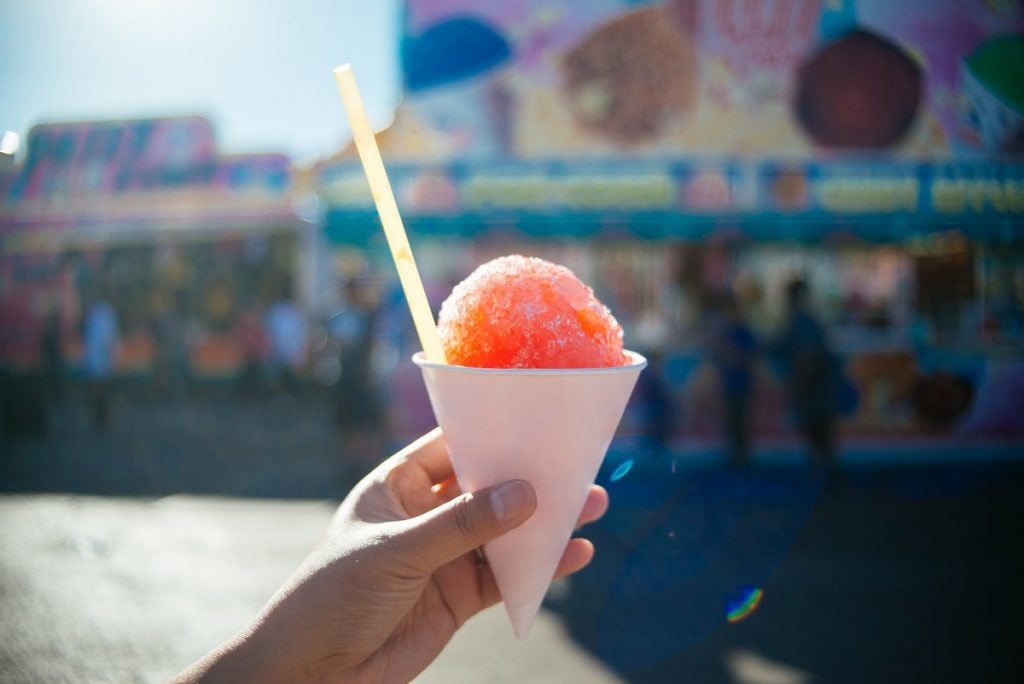
Snow cone
It is very reminiscent of shaved ice due to the cone used to serve it, but the snow cone is a typical product of North America, sometimes also called a snowball. Again, we are faced with a mix of crushed ice and coloured syrups, available in different flavours. The most popular? In Baltimore it's cream, born following the American industrial revolution of the mid-19th century, which favoured the ice trade. The New York "ice houses" mainly sold in Florida, where they transported the product in large blocks placed on a wagon. In the middle of the journey we passed through Baltimore, where the children used to chase the wagon to ask the driver for some crushed ice: it was then that the mothers began to flavour the ingredient with juices, syrups and sweet foods made at home, like pastry cream.
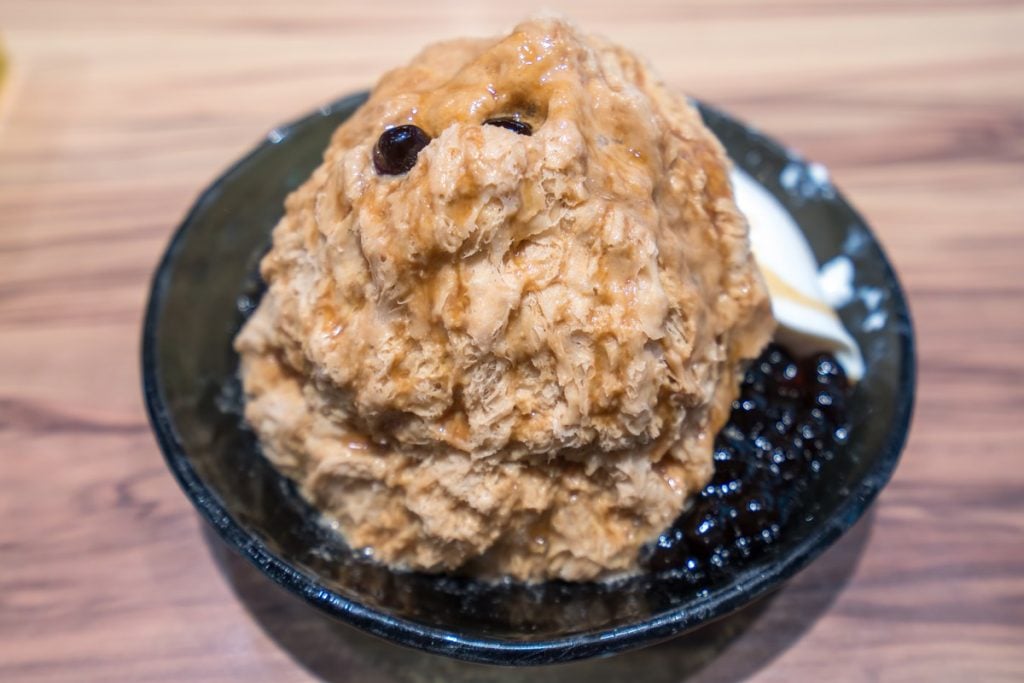
Baobing
Among the best known cold Chinese desserts, baobing, also known as cuò bīng, is a mixture of crushed ice and syrup extracted from sugar cane, widespread with different names and variants also in Taiwan, Vietnam and Malaysia. In the past, the ice was broken by hand with a kind of club and then reduced to flakes with the help of a blade, but today there are machines capable of making the pieces of ice even thinner. As an alternative to sweet syrup, condensed milk can also be used, the important thing is to play with the toppings: azuki beans, sweet potatoes, peanuts, taro. As always, room for imagination.
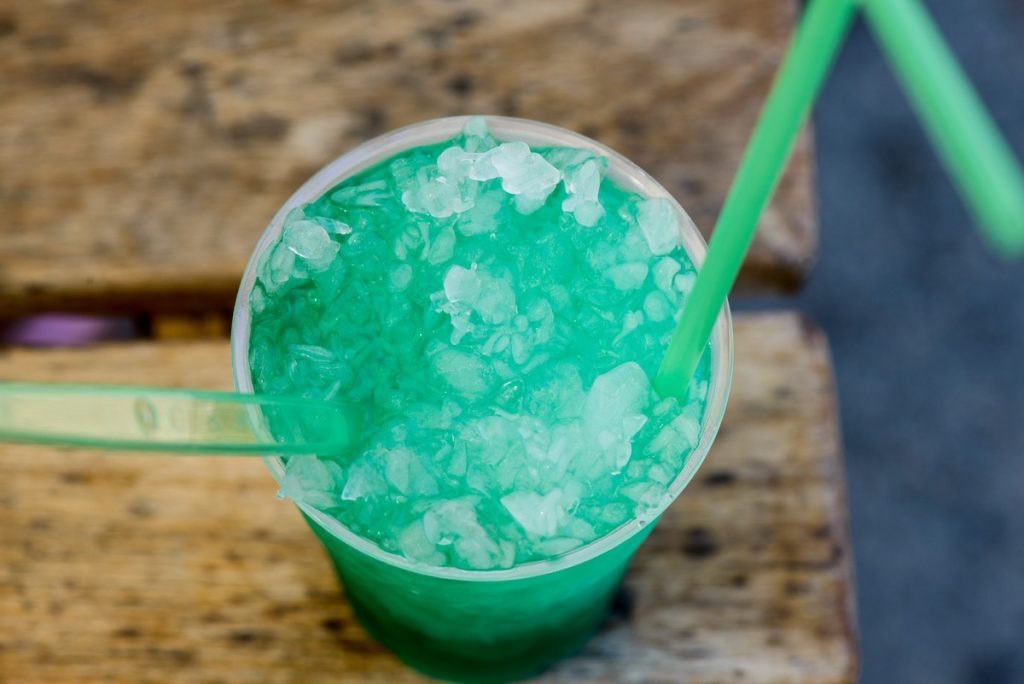
Grattachecca
In Rome, grattachecca dominates the scene: an emblem of Roman summer, this drink is made from ice "scratched" from a single large block added with fruit syrups. The name derives from the verb "grattare" to scratch and the word checca, which in the past, before the advent of refrigerators, the block of ice used to refrigerate food was called. The first kiosks of the "grattacheccari" began to spread through the alleys of the Trastevere neighbourhood at the beginning of the 20th century, a period in which Romans got into the habit of walking around the city sipping the cool drink, a practice that continues today. A sort of liquid street food, which soon became popular in all neighbourhoods and also in the rest of Italy, where it is known as ghiacciata (grattatella in Palermo, granatina in Naples, grattamarianna in Bari).
Coffee, almond and lemon granita recipe
For the coffee granita
500 g brewed espresso coffee
150 g sugar
50 g heavy cream
For the almond granita
100 g almond paste
250 g water
For the lemon granita
2 unwaxed lemons
150 sugar
400 g ice cubes
Making coffee granita
Dissolve the sugar in the hot coffee, mix and freeze in an ice tray. When ready to serve, chop the cubes and with a long spatula make the granita soft and silky. Garnish with a dollop of unsweetened and freshly whipped cream.
Making almond granita
Blend the almond paste with the water, pour the milk obtained into a low container or ice cube tray and freeze. When ready to serve, chop the cubes and with a long spatula make the granita soft and silky.
Making lemon granita
With a lemon zester obtain some strands of peel and keep aside. Peel the lemons by removing all the white pith. Put the sugar and half of the lemon peel in the mixer and bring everything to high speed to make the "icing" sugar. Add the lemons (if necessary cut into pieces to remove the seeds) and the ice cubes and blend everything. Using a spatula to make it creamy. Serve immediately with the remaining zest strands as garnish.
by Michela Becchi

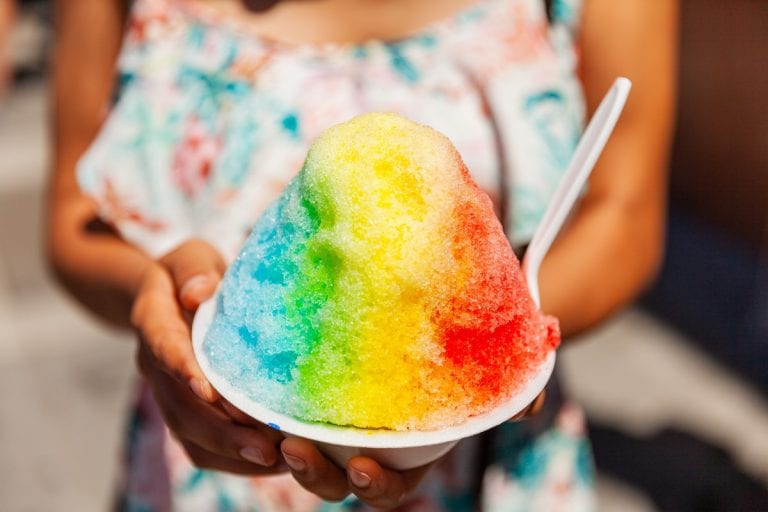
 Non-alcoholic wines? Call them what you want, but they’re still a derivative of wine.” An Interview with Martin Foradori
Non-alcoholic wines? Call them what you want, but they’re still a derivative of wine.” An Interview with Martin Foradori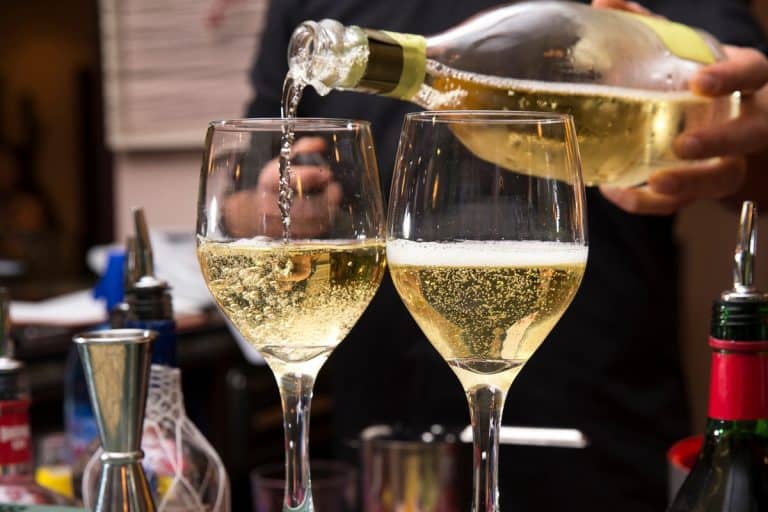 The 8 best Trentodoc wines chosen by Gambero Rosso
The 8 best Trentodoc wines chosen by Gambero Rosso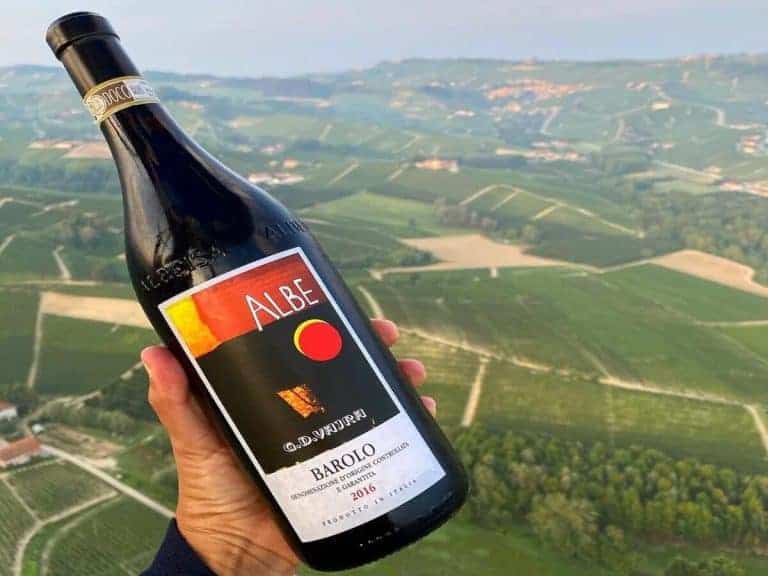 A Piedmont wine enters the top ten of Wine Spectator's "Top 100"
A Piedmont wine enters the top ten of Wine Spectator's "Top 100" Sparkling wines surpass still wines in Italian out-of-home consumption. Most popular during the aperitif
Sparkling wines surpass still wines in Italian out-of-home consumption. Most popular during the aperitif American Barbecue wins a Michelin star for the first time in history
American Barbecue wins a Michelin star for the first time in history